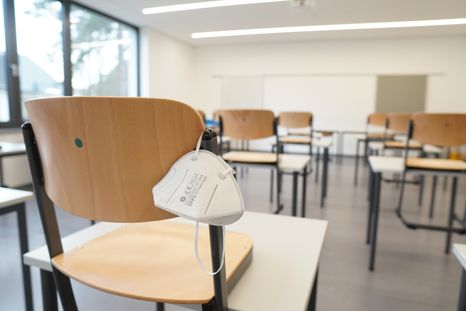Post-pandemic Teaching Woes
- Subscribe to RSS Feed
- Mark as New
- Mark as Read
- Bookmark
- Subscribe
- Printer Friendly Page
- Report Inappropriate Content
For the last several weeks, I’ve been talking with teachers of writing around the country, asking about how their classes are going this term. What they have told me has been very sobering, and it corroborates what I’ve been reading in reliable national media sources about the fallout students and teachers are experiencing after the worst of the pandemic has (we hope) passed.
National studies reveal drops in enrollment, some of them dramatic, as well as withdrawal from classes at an all-time high. Student learning seems to have been significantly affected at the K-12 level and, increasingly, reports from college campuses also raise the alarm: students seem changed, and they are in need of a great deal of support and help—whether they know it or not.
Among the teachers I’ve talked to most recently, several themes emerged. One involves attendance and engagement: one teacher said that her students, who are now attending class in person, attend class haphazardly, dropping in and out. When they are there, they seem as if they are very easily distracted or trying to do several things at once, as if they are still on Zoom where they could turn their cameras off. Keeping conversations on track, and especially keeping students actively engaged, seems harder than ever.
Other teachers talked with me about a dramatic increase in accommodations of almost every imaginable kind, and about the mental health issues students are facing. Designing a course that can meet the needs of all students is a challenging task—one reason I always think of excellent teaching as more of an art than a science—and the task now seems exponentially more difficult, as teachers try to respond not just to the need for accommodations but to challenges presented by the very hot culture wars, with trigger warnings, cancel culture, and book/author banning ever present.
Finally, teachers talked to me about student fragility as well as student resistance—maybe not resistance so much as fear or anxiousness around learning. Writing theorist James Moffett wrote years ago about the dangers of agnosis, which he defined as “the will not to know,” a kind of willful ignorance. Students today face a world of issues, events, even facts that they may simply wish not to know—and who can blame them?! As a result, they are sometimes reluctant to read or engage topics that in some ways simply overwhelm them. But they may also resist reading—print texts especially—because they are so accustomed to sound bites, video, and short snippets of text. Asked to respond to a 12-page article that had been assigned reading, one student responded, simply, “TLDR.” That is, “too long; didn’t read.”
These conversations left me feeling at least partly glad that I am retired and no longer teaching except for occasional gigs. I say “partly,” though, because the teachers I talked to weren’t giving in, throwing in the towel. Rather, they were doubling down on their efforts to design classes, assignments, and activities that would meet students where they are and engage them, that would in Piagetian terms be just ever so slightly ahead of students, holding the bar out just a little in front of them to challenge but not discourage them. And they are asking students to help create such assignments and activities, to assume agency and become co-teachers as well as co-learners. For these reasons, I’d really love to be back at full-time work, back in a place I have always loved best: the writing classroom.
What challenges are your students facing in these post-pandemic times? And how are you responding to them? Do you have stories like the ones teachers have reported to me?
Photo by marco fileccia on Unsplash
You must be a registered user to add a comment. If you've already registered, sign in. Otherwise, register and sign in.







